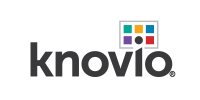Flip the Webinar

In an article entitled, “Flipping the Classroom”, Cynthia J. Brame, Assistant Director of the Center for Teaching at Vanderbilt University, describes the ”flipped classroom”, as introducing students to the subject matter before attending class. The students then use class time to discuss and analyze the material, which helps deepen their learning. Applying this new model to the standard webinar that, up until now, consisted of audio-over-presentation slides scheduled for an hour with chat-style questions and answers, the flipped webinar allows participants to view the webinar before coming together for a discussion with the other participants.
Since the ultimate goal of any webinar is for participants to expand their knowledge, the flipped webinar model enables participants to view the webinar at a convenient time, digest the material and then come together for a discussion of the ideas presented in the webinar. The webinar can be distributed as an online video presentation and the discussion can be done via a conference call or Google+ hangout with the guest and host to handle questions, discussions, or even explore a case study together.
Additionally, the “flipped webinar” solves additional problems with today’s standard webinar that consists of audio-over-presentation slides scheduled for an hour with chat-style questions and answers. Specifically,
- Webinars have a personality problem.
- Webinars have a scheduling and length problem.
- Webinars have an engagement problem.
Add personality with video and energy
Audio-only webinars rob communicators of many of the natural communication and engagement tools — body language, gestures and facial expressions, as well as props and visual aids. Psychologists will tell you that one of the earliest skills we learned as children was how to read facial expressions and to interpret them into feelings of trust and authority, so omitting this powerful communication mechanism is a costly mistake.
A faceless webinar voice talking over PowerPoint slides loses the personality and authority of the speaker. And isn’t that why people attend a webinar? To gain knowledge from the stories and the authority of the webinar presenter?
Avoid scheduling/length problems with on-demand presentations
Pair a video presentation that is available immediately with a live interactive portion that is scheduled at a future time. This approach allows the presentation materials to be more concise, since the host doesn’t have to structure the talk to try to fill an hour. Both participants and marketers benefit from the material being immediately available, because when a viewer signs up for a webinar is when he/she is most interested in the material.
Use interactive elements to increase engagement
Live Follow-up
Online presentation platforms are notoriously one-dimensional when it comes to engaging viewers. During most live webinars, many participants are actually multi-tasking. Allowing the participant to watch the webinar when he or she is most interested, can lead to a more singular engagement. And by having a live follow-up via conference call or Google+ hangout, sessions can be much more engaging and truly interactive than a sterile submit-a-question-and-give-the-answer approach.
Virtual Handouts
Virtual handouts can amplify the lessons being given in the material. Interactive elements like mini-worksheets and surveys can engage participants more deeply in the materials and channel that multitasking attention to the webinar material. Overall, the webinar participants will get much more out of it.
Conclusion: The “flipped webinar” provides a much more engaging webinar that maximizes the benefits to both the participants and presenters.
For more thoughts on flipped webinars, check out our webinar: "Flip The Webinar! How the Flipped Classroom Can Reinvent the Webinar"
Brame, C., (2013). Flipping the classroom. Retrieved Friday, September 19, 2014 from http://cft.vanderbilt.edu/guides-sub-pages/flipping-the-classroom/.
